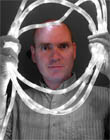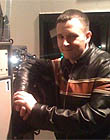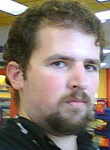|
|
 
|
|
Author
|
Topic: Star Wars: The complete saga on BR this Sept.
|
|
|
|
|
|
|
|
|
|
|
|
|
|
|
Michael Coate
Phenomenal Film Handler

Posts: 1904
From: Los Angeles, California
Registered: Feb 2001
|
 posted 02-26-2011 01:35 PM
posted 02-26-2011 01:35 PM




quote: I can't provide a link due to an error message
The sound editing and re-recording team began by preparing a four-track master mix (Left-Center-Right-Surround) which would serve as the basis for both the 35mm and 70mm stereo versions. First, the master mix was dubbed to a matrix-encoded two-track Lt-Rt (Left total-Right total) printmaster for use in creating the 35mm Dolby Stereo prints. Then, the same four-track master, with some enhancements added, was used to create the six-track version. In comparison to the 35mm Dolby Stereo version, the Six-Track Dolby Stereo version during playback offered discrete channels, greater clarity, superior dynamic range, and two extra channels for special low-frequency enhancement, in what the Dolby folks affectionately called “baby boom.” After completing the multichannel versions, the soundtrack crew created another English-language mix: a monaural mix. This would be included on prints destined for theatres not equipped with a stereophonic sound system and for versions prepared for ancillary markets. The mono prints were put into circulation upon the wide national break in June 1977.
With each subsequent mix, the filmmakers seized opportunities to revise and enhance selected portions of the soundtrack where they had felt rushed or shortchanged creatively. Sound Designer Ben Burtt recalls: “Because we were always trying to make the film better and better and fix things that were not right, there were some sweetener tracks added; things like different C-3PO or Stormtrooper lines [‘Close the blast doors’], additional sound effects, or some different ADR [the dialogue of Aunt Beru].” Knowing that multiple mixes were made containing subtle yet detectable differences help explain conflicting memories of moviegoers who remember hearing a certain sound effect or line of dialogue in one presentation but not in another.
It may be difficult to comprehend today as most major film releases on DVD sport a 5.1-channel digital soundtrack, but at the time, not knowing what the future would hold in terms of widespread adoption of multichannel sound in movie theatres and in homes, some members of the production felt the mono mix represented the definitive soundtrack of “Star Wars.” They felt that the stereo version was a novelty that selected audiences would be treated to only during a brief theatrical run. “George put a lot of effort in that mono mix,” Burtt remembers. “And he even said several times, ‘Well, this is the real mix. This is the definitive mix of the film.’ He paid more attention to it because he felt it was more important archivally.”
| IP: Logged
|
|
|
|
|
|
|
|
|
|
|
|
|
|
|
|
|
|
All times are Central (GMT -6:00)
|
This topic comprises 11 pages: 1 2 3 4 ... 9 10 11
|
Powered by Infopop Corporation
UBB.classicTM
6.3.1.2
The Film-Tech Forums are designed for various members related to the cinema industry to express their opinions, viewpoints and testimonials on various products, services and events based upon speculation, personal knowledge and factual information through use, therefore all views represented here allow no liability upon the publishers of this web site and the owners of said views assume no liability for any ill will resulting from these postings. The posts made here are for educational as well as entertainment purposes and as such anyone viewing this portion of the website must accept these views as statements of the author of that opinion
and agrees to release the authors from any and all liability.
|

 Home
Home
 Products
Products
 Store
Store
 Forum
Forum
 Warehouse
Warehouse
 Contact Us
Contact Us




 Printer-friendly view of this topic
Printer-friendly view of this topic


















